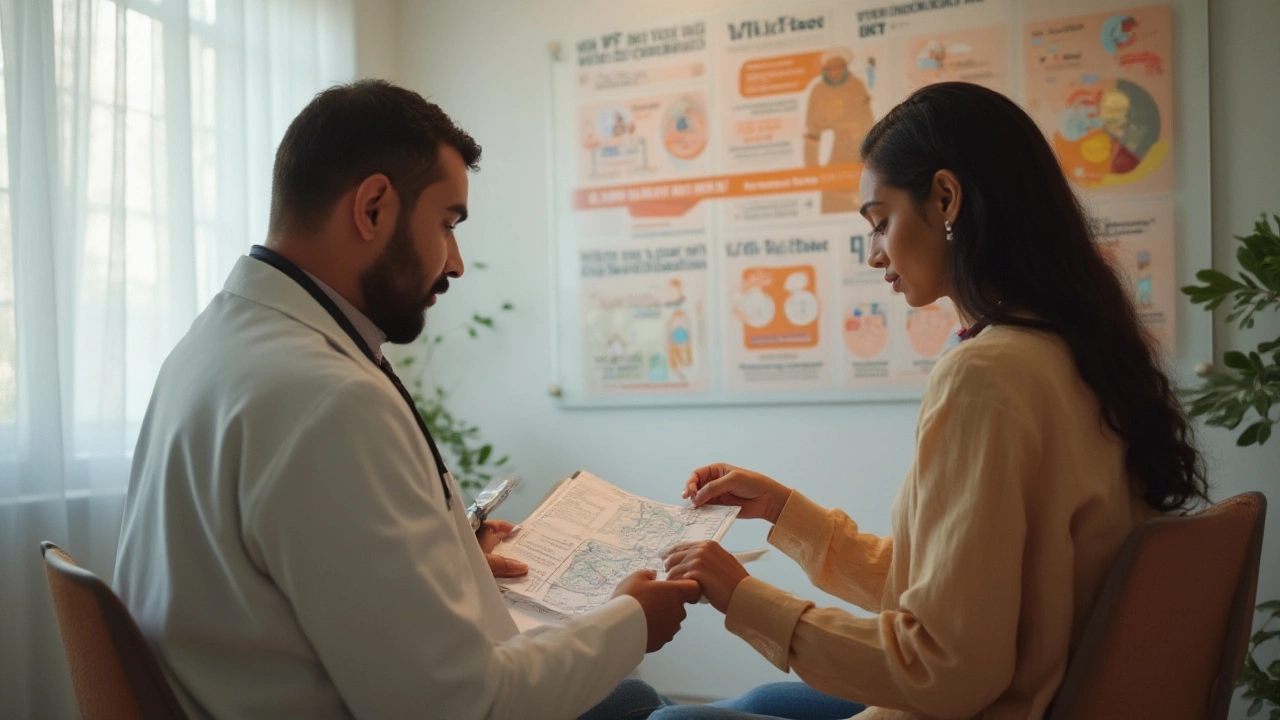Fertility Guide: Everything You Need to Know About IVF
If you’re thinking about IVF, you probably have a million questions. How much does it really cost? How long does a cycle take? What are the biggest risks? This guide pulls together the most useful facts from our articles so you can get a quick, clear picture without endless scrolling.
How IVF Works and How Long It Takes
IVF starts with a few doctor visits, hormone shots, and egg retrieval. Most cycles run about six to eight weeks from the first consultation to embryo transfer. Hormone injections usually take two weeks, followed by a short break for egg collection, fertilization in the lab, and then a few more days before the embryo is placed back into the uterus. If the first transfer doesn’t work, you might need another round, which adds another six weeks.
Understanding the timeline helps you plan work, family, and finances. Keep a calendar, set reminders for appointments, and talk to your clinic about any delays—most clinics are good at giving you a daily schedule so you know exactly what’s coming up.
Money Matters: IVF Costs, Insurance and Savings
Cost is a major factor. In the US, a single IVF cycle can range from $12,000 to $20,000, depending on location, medication, and lab fees. Some states have lower average prices, so it’s worth checking where you live or where you might travel for treatment. Insurance coverage varies widely; a handful of states mandate coverage, but many plans still leave most of the bill to you.
To keep expenses down, ask your clinic about medication discounts, shared-risk agreements, or refund programs if the cycle fails. Some people also combine cycles or use embryo banking to spread costs over time. Budgeting early and exploring financing options can reduce stress when you’re already dealing with the emotional side of fertility.
Eligibility is another piece of the puzzle. Not everyone qualifies for IVF—age, certain medical conditions, lifestyle factors, or legal restrictions can block you. Most clinics will run a basic health screen before you start, checking hormone levels, uterine health, and overall fitness for pregnancy. If you’re turned away, ask for a clear explanation and see if any changes (like losing weight or stopping smoking) could improve your chances.
Pain and side effects are real but often manageable. The hormone shots can cause bloating, mood swings, and mild cramping. Egg retrieval is done under sedation, so you shouldn’t feel pain during the procedure, but you might have some soreness afterward. If you experience severe abdominal pain or rapid weight gain, contact your doctor right away—these could be signs of ovarian hyperstimulation syndrome.
Success rates aren’t 100 percent, and they drop as age increases. Women under 35 see higher live birth rates per cycle, while those over 40 face lower odds. Knowing your personal success probability helps you set realistic expectations and decide whether to try one cycle or plan for several.
Finally, consider the emotional side. IVF can feel like a roller coaster of hope and disappointment. Having a support network—partner, friends, therapist, or a fertility support group—makes a big difference. Write down your thoughts, celebrate small wins, and remember that many couples eventually achieve their goal, even if it takes a few tries.
Use this guide as a starting point, then dive into the specific articles for deeper details on costs, timelines, risks, and insurance. Armed with clear facts, you can make smarter choices and stay focused on what matters most: building the family you envision.

Which Celebrities Have Undergone IVF Treatment?
Many celebrities have openly shared their IVF journeys, helping to break stigma around infertility. From Emma Stone to Shakira, here are real stories of how IVF helped them become parents.

Has an IVF Baby Had a Baby? The First IVF Children Becoming Parents
Yes, IVF babies are having babies-naturally and healthily. Decades of data show IVF doesn’t harm fertility. The first IVF child became a mother in 1999. Today, millions of IVF-conceived adults are parents with no increased risk of infertility.

Who Is the Biological Mother of an IVF Baby? Explained
Learn who the biological mother of an IVF baby is, the roles of egg donors, gestational carriers, and legal considerations in modern assisted reproduction.

Biggest IVF Risks: Understanding Complications, Side Effects, and Safety Tips
A deep dive into the biggest risk of IVF, critical complications, and safety insights to support couples on their fertility journey. Real facts, statistics, and expert tips.

Which State Has the Cheapest IVF? Your Guide to Affordable Fertility Treatment in the USA
Curious about affordable IVF? Explore which state tops the list for cheapest IVF, why costs vary, and smart tips to save on fertility treatments.

Best State for Families in America: Where Kids and Parents Thrive
Curious which U.S. state tops the list for families? Get the inside scoop with stats, local facts, and real-life tips on raising kids in America's best and safest places.

How Much is a Shot of IVF? Real Costs and What to Expect
Curious about the real cost of a shot of IVF? This article breaks down what you pay for, from the first appointment to the final procedure. Get real numbers, practical tips to save money, and what extras can pop up during the process. Learn why some clinics charge more, plus insider advice from people who’ve actually gone through IVF. If you want honest answers and clear info, you’re in the right place.

How Long Does IVF Take? A Clear Guide to the IVF Timeline
Wondering how long IVF actually takes? This article breaks down the IVF process step-by-step, explaining how much time each stage usually takes and what to expect along the way. Get straightforward details on how long IVF appointments, hormone shots, egg retrieval, and embryo transfer can last. We’ll share tips for staying prepared during the wait and answer what happens if you need more than one round. By the end, you’ll know exactly how to plan your schedule around an IVF cycle.

What Disqualifies You from IVF? Clear Truths About IVF Eligibility
Curious what might stop you from getting IVF? This article lists clear, real-world reasons people get turned away from fertility clinics. It details medical, age, lifestyle, and legal factors that make someone ineligible for IVF. You’ll learn facts that clinics don’t always say out loud, plus practical tips on what can help or hurt your chances. If IVF is on your mind, start here to avoid surprises down the road.

Do You Really Carry Your Own Baby with IVF?
Explore the fascinating process of carrying your own child through IVF. This article explains the science behind IVF, its difference from traditional conception, and clears up misconceptions about who carries the baby. It delves into the emotional aspects and provides practical tips for those considering this path to parenthood.

IVF Gender Selection Cost: What You Need to Know
IVF gender selection is a medical process allowing parents to choose their baby's sex. The cost varies based on factors like location, clinic choice, and legal considerations. This article explores the expenses involved in IVF gender selection, offering tips on budgeting and understanding legal concerns. We also discuss the technological aspects driving these costs and share practical advice for making informed decisions.

What is the Hardest Part of IVF?
Navigating the world of IVF treatment can be challenging, both physically and emotionally. This article sheds light on some of the toughest aspects of IVF, from dealing with the uncertainty to managing the demands on your health and finances. By understanding these hurdles, prospective parents can better prepare for the journey ahead. Key insights and practical advice are provided for coping with each stage of the process.




